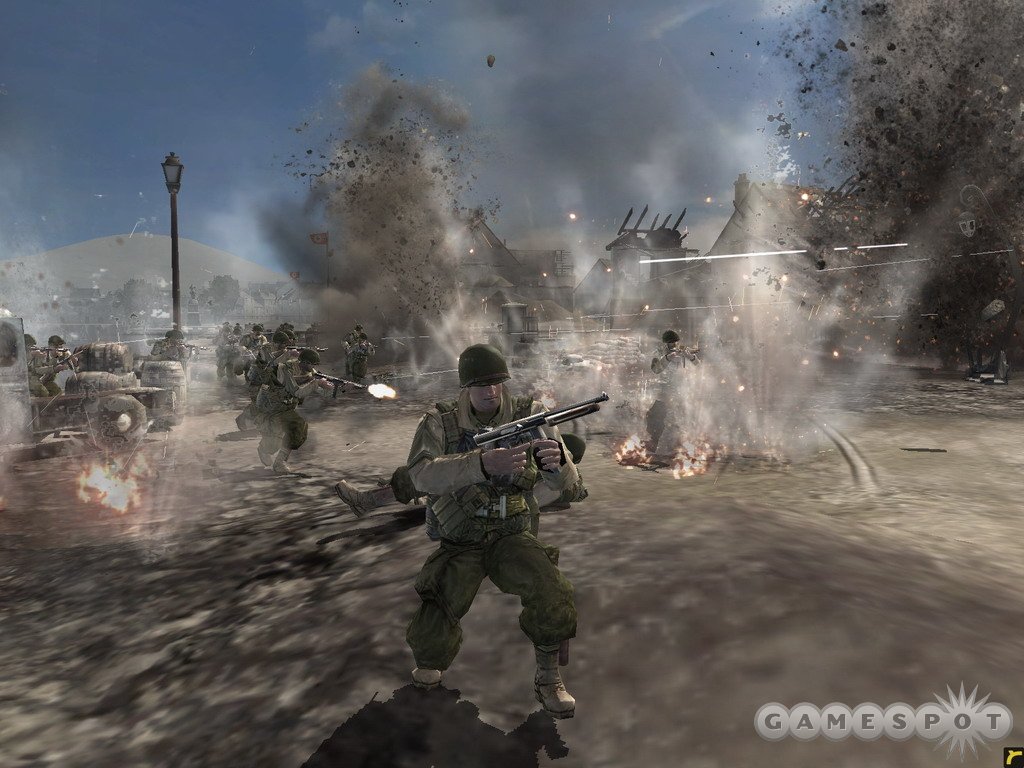E3 06: Company of Heroes Designer Diary #1 - Introducing Environmental Strategy
Producer John Johnson tells us why Company of Heroes promises to revolutionize the way you play and fight in real-time strategy games.
After years of seemingly little innovation, the real-time strategy genre is poised to break out in new directions this year. Company of Heroes, a World War II real-time strategy game, is one of the most promising of the new games on the horizon, as it looks like it will combine beautiful graphics with destructible environments. In other words, you'll no longer battle it out on static battlefields. In Company of Heroes the battlefield is constantly reshaped around you, thanks to explosions and collisions. This means that you'll have a much more dynamic experience, as you can take advantage of this fact in many ways. To explain, we have John Johnson, the producer of the game at developer Relic Entertainment. Company of Heroes is scheduled to ship later this year.
Welcome to Environmental Strategy
By John JohnsonProducer, Relic Entertainment
This is the first of many development diaries that will introduce some of Company of Heroes' key, revolutionary features that are going to change the way real-time strategy games are played. It's something we like to call "environmental strategy."

For the first time, players can play a real-time strategy game where the map is not a static checkerboard or series of choke points that plays the same way every time. We have created dynamic and destructible battlefields where players can alter any part of the landscape to fit their strategic play style. Destroying a bunch of cover objects will deny the enemy the use of that cover, but conversely will also deny you that same cover. Take out a church and you've eliminated a possible sniper nest that could be used by you or the enemy. Drop in some off-map artillery, and now you've not only taken out whatever was unlucky enough to be under the bombardment, but you've also created some new cover in the form of craters. Every object in the world has properties that the soldiers in the game are aware of. They know how to use these objects effectively for cover, and will do so without requiring micromanagement from the player, leaving the player to focus on the bigger picture.
In the video above, you'll see how all this combines to create a unique experience. In the first gameplay scene, you'll notice that moving squads into the open without first probing the area can have pretty devastating consequences. These soldiers were not prepared to deal with the two machine gun squads that opened up on them. Without any cover around, they don't last long.
In most games, the way to deal with this situation is to force your way into position with units that might be able to counter the machine guns. But in Company of Heroes, there are other ways to tactically deal with this situation. Here, we use a Sherman tank that has been upgraded with a bulldozer to create a hole in the hedgerow and flank the machine gun nests. Following up with some soldiers to finish off the enemies, and using your environment successfully, has altered the course of this battle to your advantage.
In the church and graveyard scene, we give two squads of paratroopers a simple attack-move order into the graveyard. You will notice that as soon as they come under fire, they move to the stone walls for cover all on their own and then use fire and maneuver tactics to get into the graveyard, moving from gravestone to gravestone. This is all part of the squad's artificial intelligence. These soldiers are aware of every object that can provide them cover from enemy fire. By having two squads, we've used one squad to keep the enemy units in the church occupied, while the other squad moved in close enough to eliminate the enemy in the church with a well-placed satchel charge.

Being able to read the battlefield and set up tactical situations is very important to your overall strategy in Company of Heroes. In the final scene, the road is a perfect funnel to lay down a nice trap for any advancing enemies. The machine gun nest is nicely placed outside the line of sight from any advancing troops. By the time they see it, it's too late for them to react. Using mines here was an added precaution against not only advancing German infantry, but also armor, which could take out the machine gun nest.
I hope you enjoyed this introduction to Company of Heroes' development. Stay tuned for more exciting news from the front line!
Got a news tip or want to contact us directly? Email news@gamespot.com
Join the conversation